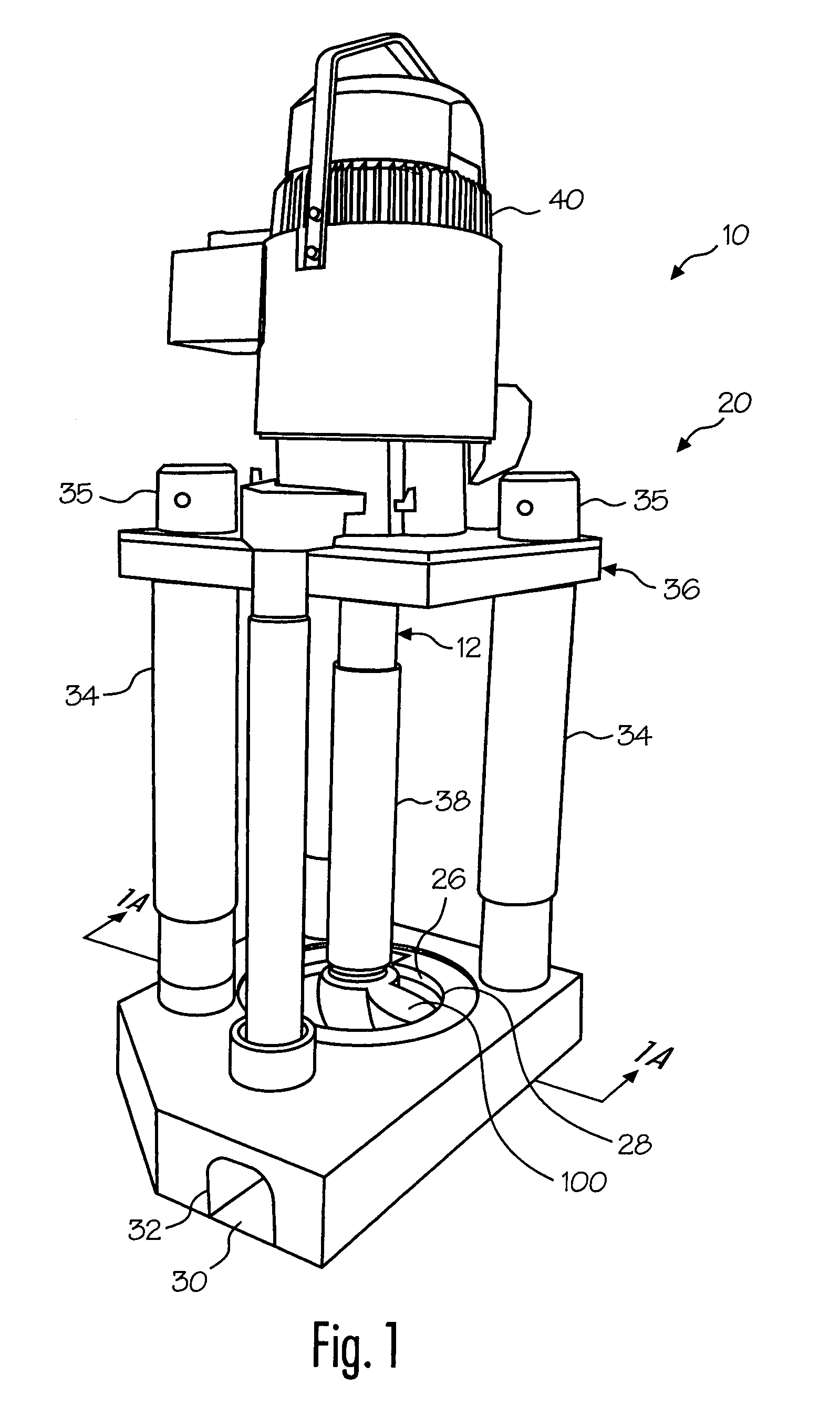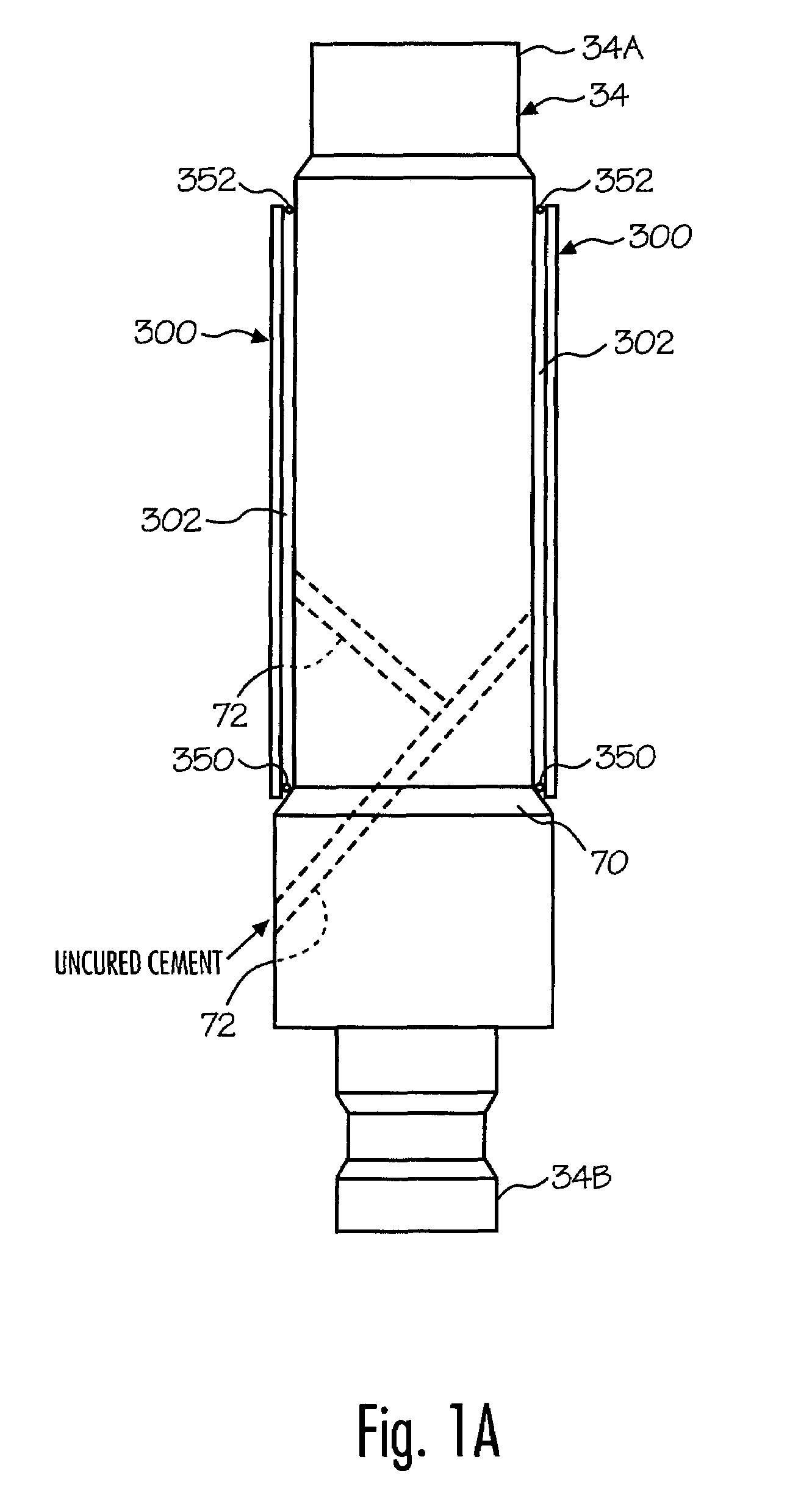Protective coatings for molten metal devices
a technology of protective coatings and molten metals, applied in the field of components, can solve the problems of graphite components still being subject to corrosive attacks from molten metal, oxidation and corrosion of graphite components, and failure of components, so as to achieve the effect of reducing component failur
- Summary
- Abstract
- Description
- Claims
- Application Information
AI Technical Summary
Benefits of technology
Problems solved by technology
Method used
Image
Examples
Embodiment Construction
[0052]Referring now to the drawing where the purpose is to illustrate and describe different embodiments of the invention, and not to limit same, FIG. 1 shows a molten metal pump 10 in accordance with the present invention. System 10 includes a pump 20.
[0053]Pump 20 is specifically designed for operation in a molten metal furnace or in any environment in which molten metal is to be pumped or otherwise conveyed. Pump 20 can be any structure or device for pumping or otherwise conveying molten metal, such as the tangentical-discharge pump disclosed in U.S. Pat. No. No. 5,203,681 to Cooper, or an axial pump having an axial, rather than tangential, discharge, or any type of molten metal pump having any type of discharge. Basically, preferred pump 20 has a pump base 24 submersible in a molten metal bath B. Pump base 24 includes a generally nonvolute pump chamber 26, such as a cylindrical pump chamber or what has been called a “cut” volute (although pump base 24 may have any shape pump cha...
PUM
| Property | Measurement | Unit |
|---|---|---|
| thickness | aaaaa | aaaaa |
| area | aaaaa | aaaaa |
| gravity | aaaaa | aaaaa |
Abstract
Description
Claims
Application Information
 Login to View More
Login to View More - R&D
- Intellectual Property
- Life Sciences
- Materials
- Tech Scout
- Unparalleled Data Quality
- Higher Quality Content
- 60% Fewer Hallucinations
Browse by: Latest US Patents, China's latest patents, Technical Efficacy Thesaurus, Application Domain, Technology Topic, Popular Technical Reports.
© 2025 PatSnap. All rights reserved.Legal|Privacy policy|Modern Slavery Act Transparency Statement|Sitemap|About US| Contact US: help@patsnap.com



